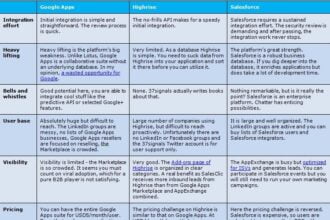I recently read an interview on the Harvard Business Review blog with Amanda Cox, who is a trained statistician and the graphics editor at the New York Times. I appreciate the perspective she shared with author Scott Berinato.
I recently read an interview on the Harvard Business Review blog with Amanda Cox, who is a trained statistician and the graphics editor at the New York Times. I appreciate the perspective she shared with author Scott Berinato.
A few key takeaways:
- Data visualization improves storytelling. “Most everyone here [at the New York Times] would agree the best way to tell some stories is through data,” Cox said. “Some think very rarely, some think most of the time, but they would concede telling the story with data is accepted.”
- The primary data visualization skill needed: ability to ask good questions. I often hear people talk about data scientists. I find the term intimidating; it implies that to be able to create excellent data visualizations you need a PhD. I’m sure that’s true for some types of data analysis – but Cox contends that the primary skill needed to create good visualizations is the ability to ask good questions. Right on.
- Visualizations for visualizations’ sake really don’t matter all that much. Data visualizations only matter when you can do something useful with them – when they are actionable. “There’s an ‘Aha!’ moment sometimes,” Cox said. “Even on the most obvious things.”
Data analysis is becoming a bigger part of more people’s lives. Amanda Cox mentioned in the interview that the people she works with are journalists, biologists, urban planners, and mapmakers. If I think about my own role in customer advocacy (and formerly product marketing), I am similar—I come from a background as an industry analyst, not a statistician. No matter what our profession or background, we can all benefit from data visualization – a key aspect of data discovery software – to help us tell compelling stories, ask and answer more questions, and take the right actions.







